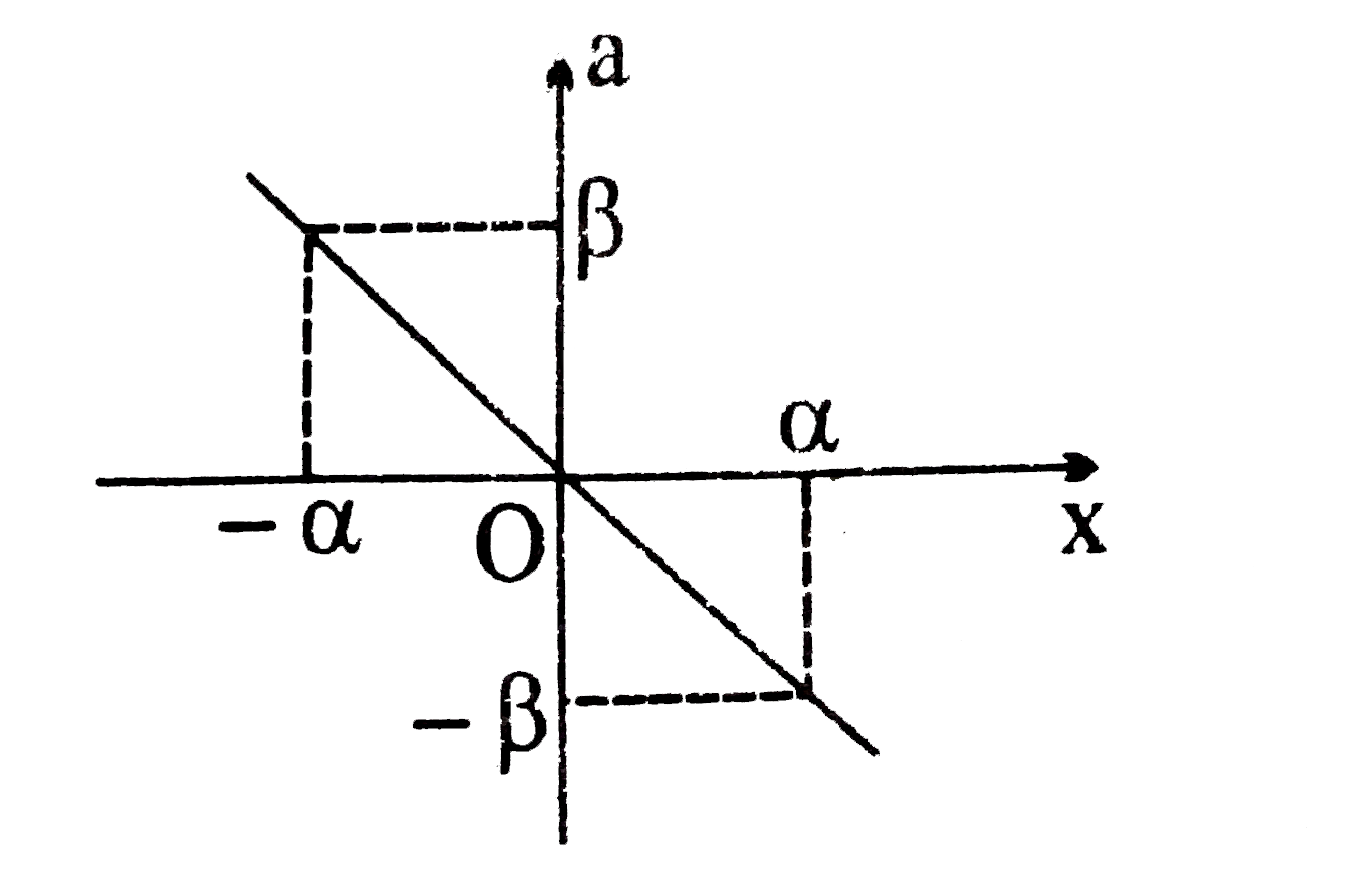Which of the following relationship between the acceleration, a and the displacement x of a particle involve simple harmonic motion.
(a) a=7.0x (b) a=−200x2 (c) a=−10x (d) a=100x3
To determine which of the given relationships between acceleration a and displacement x involves simple harmonic motion (SHM), we need to analyze each option based on the fundamental condition for SHM.
In SHM, the acceleration a is directly proportional to the displacement x and is always directed towards the equilibrium position. This can be mathematically expressed as:
a=−kx
where k is a positive constant. The negative sign indicates that the acceleration is directed opposite to the displacement.
Now, let's evaluate each option:
Step 1: Analyze Option (a) a=7.0x
1. The equation is a=7.0x.
2. Here, there is no negative sign, which means the acceleration is in the same direction as the displacement.
3. Therefore, this does not satisfy the condition for SHM.
Conclusion: Option (a) is not in SHM.
Step 2: Analyze Option (b) a=−200x2
1. The equation is a=−200x2.
2. Although there is a negative sign, the term x2 indicates that the acceleration is proportional to the square of the displacement, not the displacement itself.
3. This does not match the form a=−kx.
Conclusion: Option (b) is not in SHM.
Step 3: Analyze Option (c) a=−10x
1. The equation is a=−10x.
2. This equation matches the form a=−kx with k=10.
3. The negative sign indicates that the acceleration is directed towards the equilibrium position, satisfying the condition for SHM.
Conclusion: Option (c) is in SHM.
Step 4: Analyze Option (d) a=100x3
1. The equation is a=100x3.
2. There is no negative sign, and the acceleration is proportional to the cube of the displacement, not the displacement itself.
3. This does not match the form a=−kx.
Conclusion: Option (d) is not in SHM.
Final Answer:
The only relationship that involves simple harmonic motion is:
(c) a=−10x
---
2. Here, there is no negative sign, which means the acceleration is in the same direction as the displacement.
3. Therefore, this does not satisfy the condition for SHM.
2. Although there is a negative sign, the term x2 indicates that the acceleration is proportional to the square of the displacement, not the displacement itself.
3. This does not match the form a=−kx.
2. This equation matches the form a=−kx with k=10.
3. The negative sign indicates that the acceleration is directed towards the equilibrium position, satisfying the condition for SHM.
2. There is no negative sign, and the acceleration is proportional to the cube of the displacement, not the displacement itself.
3. This does not match the form a=−kx.
The only relationship that involves simple harmonic motion is:
Topper's Solved these Questions
Similar Questions
Knowledge Check
Which of the following relationships between the acceleration a and the displacement x of a particle executing simple harmonic motion?
Aa=2x2Ba=−2x2Ca=2xDa=−2xThe ralation between acceleration and displacement of four particles are given below
which one of the particles is executing simple harmonic motion?Aax=+2xBax=+2x2Cax=−2x2Dax=−2x
The phase difference between displacement and acceleration of particle in a simple harmonic motion is
View SolutionWhich of the following relations representing displacement x (t) of particle describes motion with constant acceleration?
View SolutionThe relation between acceleration and displacement of four partical are given below
Which, one of the particle is exempting simple harmonic motion ?
View SolutionThe acceleration-displacement (a−X) graph of a particle executing simple harmonic motion is shown in the figure. Find the frequency of oscillation.

View SolutionThe velocity v and displacement x of a particle executing simple harmonic motion are related as
vdvdx=−ω2x.
Atx=0,v=v0. Find the velocity v when the displacement becomes x.
View SolutionThe velocity v and displacement x of a particle executing simple harmonic motion are related as
vdvdx=−ω2x.
Atx=0,v=v0. Find the velocity v when the displacement becomes x.
View Solution
